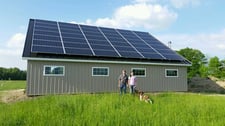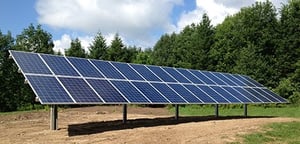There are a couple of different types of installation methods for solar panels. Here at Kseng Energy Solutions, we install roof-mounted solar panels, ground-mounted solar panels, and solar carport. These installation types accomplish different goals, and what works for one customer may not be the best option for other customers.
It is important to examine the advantages and disadvantages of all installation types when considering solar for your business, farm, or home. The goal of this blog post is to highlight the things you need to know to make an informed solar investment decision.
Before diving into the list, let's first define what a ground mount and roof mount solar system is.

 A roof mount is the most common type of installation. This is when the solar racking, which holds the panels in place, is installed directly on the roof. Panels can be attached to flat or sloping roofs consisting of metal, shingle, or rubber materials.
A roof mount is the most common type of installation. This is when the solar racking, which holds the panels in place, is installed directly on the roof. Panels can be attached to flat or sloping roofs consisting of metal, shingle, or rubber materials.
Not all roof-mounted systems require penetration to be secured to the roof. If you have a flat room, a ballast mount is an option. These installations are secured by blocks that weigh the system components down.
 A ground mount is when the panels are secured to a rack structure that is connected to the ground with steel beams or another type of metal post. Ground mounts can be installed in an open area or as a carport over a parking lot.
A ground mount is when the panels are secured to a rack structure that is connected to the ground with steel beams or another type of metal post. Ground mounts can be installed in an open area or as a carport over a parking lot.
Ground mounts can be installed wherever the conditions are best for solar, making them a great alternative for someone who doesn’t have enough usable roof space or just prefer to not have panels mounted to the roof.